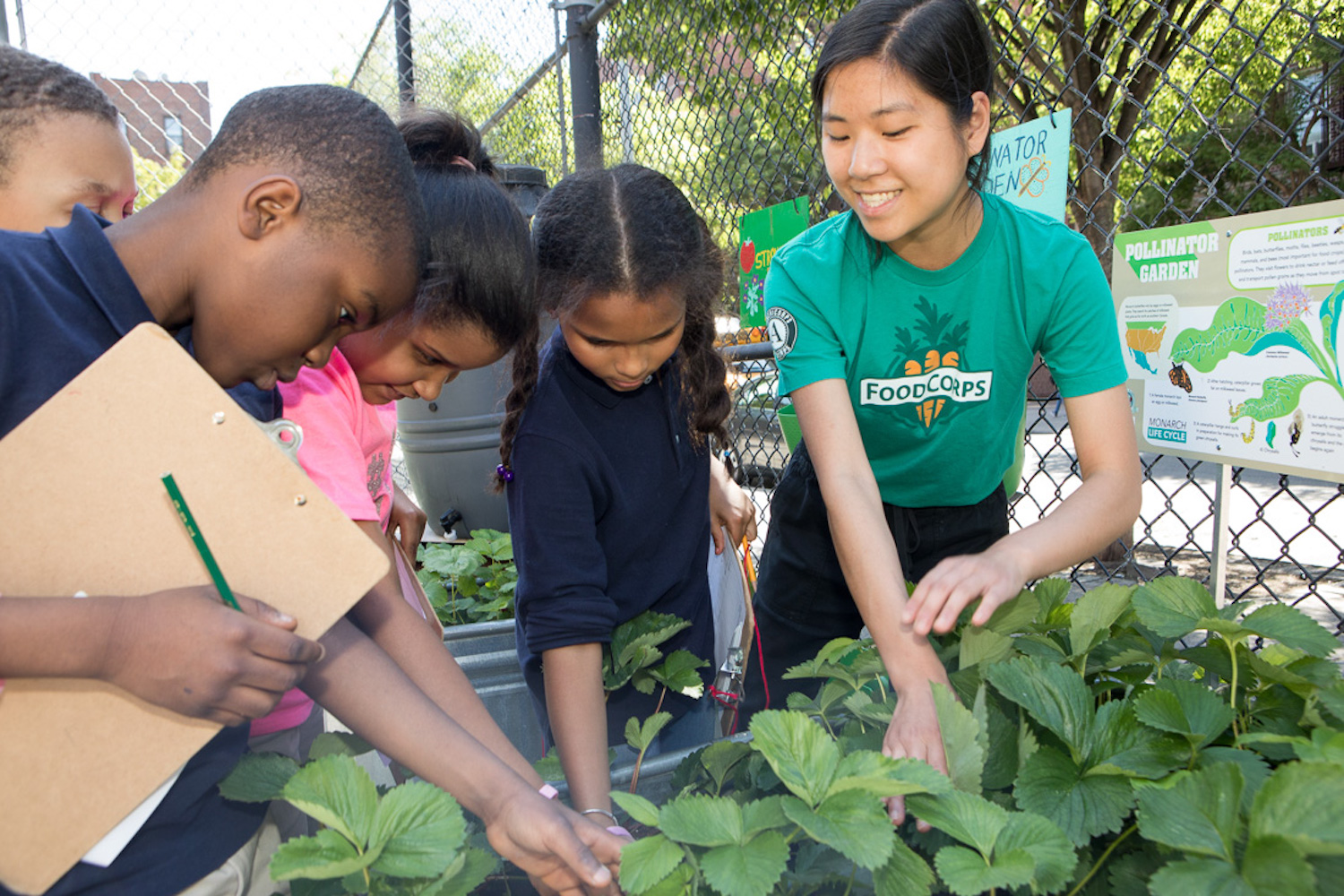When COVID-19 forced schools to close across the United States, FoodCorps reimagined hands-on food and nutrition education. The national service program educates students in more than 375 schools across the United States. But now FoodCorps service members are teaching classes remotely while also serving on the frontlines of emergency feeding programs.
“We know that healthy food is essential for kids,” Zeke Smith, Vice President of Programs at FoodCorps tells Food Tank. “But millions of kids in the U.S. — especially children of color and children from low-income communities — face ongoing barriers to getting the nourishment they need.”
FoodCorps prioritizes hands-on learning opportunities and service members typically use classrooms, cafeterias, and school gardens to improve students’ relationships with healthy food. But when students could no longer gather in-person, FoodCorps continued their hands-on lessons through distance learning. They adapted 35 classroom activities for students’ homes and service members created more than 150 video lessons.
Some service members, like Maggie Blumenthal in Sheepscot Valley, Maine teamed up with their school’s history and literacy teachers to produce a Garden To Table video series. The videos teach students about growing herbs at home and using different types of seeds. Nutrition lessons also engage the school’s chefs, who share simple recipes for kids to follow at home. “Even though the transition was a bit rocky from in-school to virtual teaching, the students are excelling at engaging with teachers, peers, and family members,” Blumenthal tells Food Tank.
But not all students can watch Blumenthal’s lessons. Upwards of 26 percent of households in Somerville, ME may not have internet access, according to the U.S. Census Bureau. “There is a large percentage of families that do not have reliable access to the internet,” says Blumenthal. Many of her students are unable to access the Zoom calls and YouTube videos she utilizes. For now, the school is working to provide physical copies of lessons to these students.
Blumenthal encountered other challenges during the transition as well. In the first half of the school year, she ran a Fresh Fruit and Vegetable Program to increase access to healthy foods. But while the district is delivering school meals by bus directly to students’ homes, the Fresh Fruit and Vegetable Program is no longer part of the schools’ food services.
In other regions, however, service members are helping schools find ways to continue providing students with fresh produce. Marco Tapia, a service member in Oxnard, California, is helping to distribute 4,000 pre-packaged and frozen meals a month to students of the district’s 20 schools. Oxnard schools partnered with local farmers to ensure fresh produce is included in each meal. Tapia hopes the school district will also continue providing students with healthy food during the summer.
Prior to the pandemic, Tapia also advocated to include bilingual information on meal distributions as well as nutrition information for Oxnard families. He joined FoodCorps, in part, to be the role model for students that he did not have himself growing up. “I wish I had someone who looked like me when I was a kid during my school experience,” Tapia tells Food Tank. Fifty-four percent of California public school students are Latinx; however, only 20 percent of their teachers are Latinx.
When schools began to close, Tapia helped create flyers with vital information about food assistance cash benefits each student will this summer via Coronavirus Pandemic-Electronic Benefit Transfer Cards (P-EBT). Tapia’s efforts helped families in the community understand their eligibility for P-EBT and clarified that it did not disqualify them from participating in other emergency funding or feeding programs like the Supplemental Nutrition Assistance Program (SNAP) or school meals.
It is important, Smith tells Food Tank “that families feel more connected to school food and more deeply understand the role that healthy school meals play in setting up kids to thrive in the classroom and at life.”
Photo courtesy of FoodCorps











